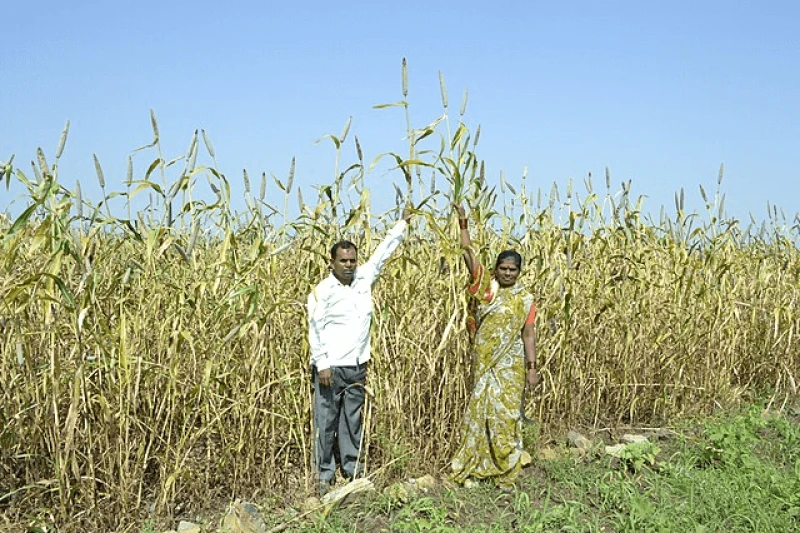The good and problematic elements of the ‘Green Revolution’
The good and problematic elements of the ‘Green Revolution’ — and prospects for genetics-driven version 2.0
Drishtiias | October 12, 2023
XLinkedInFacebookRedditBlueskyThreads


What were the Impacts of the Green Revolution?
Increased Food Production: The Green Revolution led to a significant increase in agricultural productivity. New high-yielding crop varieties, such as dwarf wheat and rice, produced higher yields per hectare of land, helping to meet the growing global demand for food. For example, in 1978–1979, a tremendous increase in crop production led to a grain output of 131 million tones, making India one of the largest agricultural producers in the world.
Follow the latest news and policy debates on sustainable agriculture, biomedicine, and other ‘disruptive’ innovations. Subscribe to our newsletter.
What are the Challenges brought by the Green Revolution?
- It caused environmental degradation due to the use of synthetic fertilizers and pesticides, and soil erosion and water pollution. For example, the reliance on modern agricultural technologies has made some countries and communities dependent on external inputs, which can be expensive and subject to market fluctuations.
Follow the latest news and policy debates on sustainable agriculture, biomedicine, and other ‘disruptive’ innovations. Subscribe to our newsletter.
Is Green Revolution 2.0 a Solution to the Green Revolution?
- Green Revolution 2.0 is seen as a way to make agriculture more adaptive and resilient to the changing climate and socio-economic conditions, and to ensure food and nutrition security for the present and future generations.
- Some of the features of Green Revolution 2.0 are:
- Biotechnology and Genetic Engineering: Green Revolution 2.0 places a strong emphasis on biotechnology and genetic engineering to develop crops that are more resilient to climate change, pests, and diseases. Genetically modified (GM) crops, if adopted responsibly, can contribute to increased productivity and reduced environmental impact.
- Precision Agriculture: This approach involves the use of advanced technologies like GPS-guided tractors and drones to optimize the use of resources such as water, fertilizers, and pesticides. Precision agriculture can increase efficiency and reduce the environmental footprint of farming.
This is an excerpt. Read the original post here
XLinkedInFacebookRedditBlueskyThreads

 | Videos | More... |

Video: Nuclear energy will destroy us? Global warming is an existential threat? Chemicals are massacring bees? Donate to the Green Industrial Complex!
 | Bees & Pollinators | More... |

GLP podcast: Science journalism is a mess. Here’s how to fix it

Mosquito massacre: Can we safely tackle malaria with a CRISPR gene drive?

Are we facing an ‘Insect Apocalypse’ caused by ‘intensive, industrial’ farming and agricultural chemicals? The media say yes; Science says ‘no’
 | Infographics | More... |

Infographic: Global regulatory and health research agencies on whether glyphosate causes cancer
Does glyphosate—the world's most heavily-used herbicide—pose serious harm to humans? Is it carcinogenic? Those issues are of both legal and ...
 | GMO FAQs | More... |

Why is there controversy over GMO foods but not GMO drugs?
Genetic Literacy Project

How are GMOs labeled around the world?
Genetic Literacy Project

How does genetic engineering differ from conventional breeding?
Genetic Literacy Project
 | GLP Profiles | More... |

Alex Jones: Right-wing conspiracy theorist stokes fear of GMOs, pesticides to sell ‘health supplements’




 Viewpoint — Fact checking MAHA mythmakers: How wellness influencers and RFK, Jr. undermine American science and health
Viewpoint — Fact checking MAHA mythmakers: How wellness influencers and RFK, Jr. undermine American science and health Viewpoint: Video — Big Solar is gobbling up productive agricultural land and hurting farmers yet providing little energy or sustainabilty gains
Viewpoint: Video — Big Solar is gobbling up productive agricultural land and hurting farmers yet providing little energy or sustainabilty gains Fighting deforestation with CO2: Biotechnology breakthrough creates sustainable palm oil alternative for cosmetics
Fighting deforestation with CO2: Biotechnology breakthrough creates sustainable palm oil alternative for cosmetics Trust issues: What happens when therapists use ChatGPT?
Trust issues: What happens when therapists use ChatGPT? 30-year-old tomato line shows genetic resistance to devastating virus
30-year-old tomato line shows genetic resistance to devastating virus California, Washington, Oregon forge immunization alliance to safeguard vaccine access against federal undermining
California, Washington, Oregon forge immunization alliance to safeguard vaccine access against federal undermining The free-range chicken dilemma: Better for birds, but with substantial costs
The free-range chicken dilemma: Better for birds, but with substantial costs ‘You have to treat the brain first’: Rethinking chronic pain with Sanjay Gupta
‘You have to treat the brain first’: Rethinking chronic pain with Sanjay Gupta
